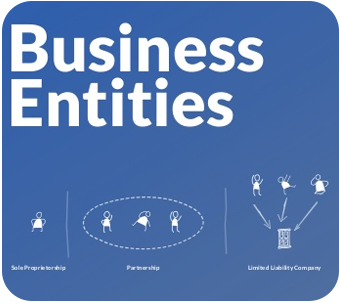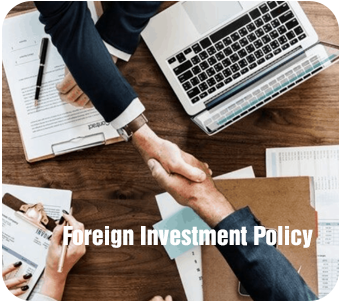Singapore
1StopConsultant Pte Ltd
One Raffles Place
Tower one, level 24
Singapore 048616
Email: singapore@1stopconsultant.com

Visitors are generally granted either a 14-day or 30-day social visit pass on arrival, provided they hold passports with a validity of at least six months, sufficient funds to cover their stay in Singapore, confirmed onward/return tickets and entry documentation for any onward destination. A social visit pass permits short stays, enabling attendance at job interviews, short business negotiations, discussions or meetings. For longer stays, see below.
Any person wishing to be employed or to work under a contract of service or employment (or any similar agreement) for a prolonged period in Singapore must obtain an employment pass.
Business visitor
The Singapore government strongly supports new investors/entrepreneurs in establishing business activities in the country. Through the Singapore Economic Development Board (EDB), the Global Investor Programme (GIP) for foreign investors has been developed under which foreigners are allowed to enter and stay in Singapore through the following means:
- multiple journey visa (MJV)
- long-term visit pass for entrepreneurs (lTVP)
- EntrePass.
- are ready to start a new business/company in Singapore and who will be actively involved in the operation of the business/company
- own a business which must have been registered with the Accounting and Corporate Regulatory Authority (ACRA) for a maximum of six months at the time of submission of the EntrePass application.
All new EntrePass applicants must register their companies as private limited companies with at least S$50,000 paid-up share capital and hold at least a 30 per cent shareholding in the company. The Ministry of Manpower (MOM) and the Standards, Productivity and Innovation Board are responsible for processing applications for EntrePasses.
- P1 pass: for foreigners earning a fixed monthly salary of more than S$7,000
- P2 pass: for foreigners earning a fixed monthly salary of more than S$3,500 and up to S$7,000 and who possess recognized qualifications
- Q1 pass: for foreigners earning a fixed monthly salary of more than S$2,500 and who possess recognized qualifications.
The personalized employment pass (PEP) is available for employment pass holders who have worked in Singapore for some time or overseas foreign professionals whose last drawn fixed monthly salary overseas was at least S$7,000. The PEP allows the holder to remain in Singapore for up to six months between jobs to evaluate new employment opportunities and its validity is not conditional upon the PEP holder keeping his job with the same employer, unlike an employment pass.
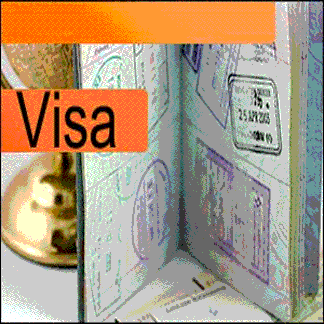
- representative offices
- branches of parent companies
- Singapore subsidiaries
- partnerships
- joint ventures
- trusts.
The government authority responsible for registering representative offices for most industries (including manufacturing, business services and commerce) is International Enterprise Singapore (the IES).
Representative offices of banking, finance and insurance businesses have to be registered with the Monetary Authority of Singapore (MAS).
A representative office would not normally be regarded as a taxable entity in Singapore as it does not generate income. However, unless protected under a tax treaty, in some circumstances, the Inland Revenue Authority of Singapore (IRAS) may take the view that there is some profit element which should be subject to tax (for example, where the representative office regularly secures orders for acceptance by the overseas head office of the foreign corporation). In such circumstances, the IRAS may impose taxes based on a notional profit of 5 per cent of the operating overheads and expenses incurred by the representative office in Singapore. In this case, tax would be levied at the normal corporate rate on the notional profit amount. This is because the IRAS may regard the activities rendered by the representative office to the head office of the foreign corporation as sufficient to amount to a taxable presence in Singapore.
Branch office
A branch must have a registered office address in Singapore and two local agents for acceptance of service of process and notices. Note that the liabilities of the branch are the liabilities of the foreign company which established it.
A branch will not be subject to limitations on the scope of its activities. However, just as with any other business or company operating in Singapore, certain types of business activities will require governmental approvals and licenses. The registered foreign company will then be able to carry on business in Singapore through its branch.
From a taxation point of view, a branch is considered a non-resident entity (because control and management are exercised outside Singapore) and, therefore, is not eligible for tax exemptions and incentives available to local companies in Singapore. The IRAS will impose income tax on the income of the branch accrued in or derived from Singapore. The current applicable corporate tax rate (for the 2010 year of assessment onwards) is 17 per cent on all chargeable income accrued in or derived from Singapore.
Singapore subsidiary
A company must be incorporated with a minimum of one member and have at least one director who is ordinarily resident in Singapore. A Singapore citizen, permanent resident or an employment pass holder will typically satisfy this requirement. Subject to compliance with these residency requirements, the sole shareholder and director can be the same person. Every Singapore-incorporated company must maintain a registered office in Singapore and have at least one company secretary who is ordinarily resident in Singapore.
A subsidiary may be either a private or a public company. Professional assistance should be sought to ensure that the most suitable corporate structure is chosen. The majority of companies in Singapore are private companies. Private companies are limited to a maximum of 50 non-employee shareholders. Although it is possible to incorporate a company with unlimited liability, there may be few commercial or other benefits in doing so. In a limited liability company, the liability of the members to contribute to the debts of the company is limited to the amount they each agreed to contribute as capital. Private companies are also subject to fund-raising restrictions and must not offer their shares to the public or engage in any activity that would require the lodgment of a disclosure document (for example, a prospectus). A private limited company’s name in Singapore normally ends with “Private Limited” or “Pte Ltd”.
Public companies are usually listed on a stock exchange and have well-established medium-to-large businesses with a large number of shareholders. Public companies are subject to more stringent rules and regulations as they have the ability to raise funds from the public. A public company’s name in Singapore ends with “Limited” or “Ltd”.
A corporate tax rate of 17 per cent for the 2010 year of assessment applies to Singapore incorporated and registered companies.
Partnership
Each partner is personally liable (on a joint and several basis) with the other partners for the debts and obligations of the partnership incurred while the relevant person is a partner. Each partner can be held responsible for the actions of another partner. Subject to an exception for certain types of professional partnerships, partnerships may not generally have more than 20 members.
Limited liability partnerships
An LLP partner can be an individual or a business entity and retains the desired flexibility of a partnership to the extent that it has less onerous reporting requirements than companies. Further, an LLP partner’s liability is limited (that is, a partner is not liable for liabilities of the other partner(s)).
An LLP must have at least two partners at all times and one manager who is ordinarily resident in Singapore. The manager may be held personally liable for the failure of the LLP to submit an annual declaration of solvency statement.
For income tax purposes, an LLP is tax-transparent (that is, each LLP partner will bear the liability of paying taxes according to its own tax circumstances, which would include its share of profits from the LLP). For treaty purposes, the Singapore tax authorities may not issue a tax residency certificate for the LLP as it is a tax-transparent entity, but may consider issuing the certificate to the LLP’s partners who are individuals or companies resident in Singapore for tax purposes.
A limited partner’s liability is capped at his agreed investment in the limited partnership provided that the limited partner does not participate in management of the limited partnership. If the limited partner does participate in management of the limited partnership, he risks losing his limited liability status for the period of such participation in management. The LP Act helpfully sets out a non-exhaustive list of “safe harbor” activities which do not constitute participating in management of a limited partnership.
Singapore Exchange
Potential investors should ask their legal advisers for a thorough outline of the current listing rules.

- representative offices
- branches of parent companies
- Singapore subsidiaries
- partnerships
- joint ventures
- trusts.
The government authority responsible for registering representative offices for most industries (including manufacturing, business services and commerce) is International Enterprise Singapore (the IES).
A representative office must be staffed by a representative from the foreign corporation’s head office and it can engage Singaporean support staff. Liabilities of a representative office are borne by the foreign corporation.
A representative office would not normally be regarded as a taxable entity in Singapore as it does not generate income. However, unless protected under a tax treaty, in some circumstances, the Inland Revenue Authority of Singapore (IRAS) may take the view that there is some profit element which should be subject to tax (for example, where the representative office regularly secures orders for acceptance by the overseas head office of the foreign corporation). In such circumstances, the IRAS may impose taxes based on a notional profit of 5 per cent of the operating overheads and expenses incurred by the representative office in Singapore. In this case, tax would be levied at the normal corporate rate on the notional profit amount. This is because the IRAS may regard the activities rendered by the representative office to the head office of the foreign corporation as sufficient to amount to a taxable presence in Singapore.
Branch office
A branch must have a registered office address in Singapore and two local agents for acceptance of service of process and notices. Note that the liabilities of the branch are the liabilities of the foreign company which established it.
A branch will not be subject to limitations on the scope of its activities. However, just as with any other business or company operating in Singapore, certain types of business activities will require governmental approvals and licenses. The registered foreign company will then be able to carry on business in Singapore through its branch.
From a taxation point of view, a branch is considered a non-resident entity (because control and management are exercised outside Singapore) and, therefore, is not eligible for tax exemptions and incentives available to local companies in Singapore. The IRAS will impose income tax on the income of the branch accrued in or derived from Singapore. The current applicable corporate tax rate (for the 2010 year of assessment onwards) is 17 per cent on all chargeable income accrued in or derived from Singapore.
A company must be incorporated with a minimum of one member and have at least one director who is ordinarily resident in Singapore. A Singapore citizen, permanent resident or an employment pass holder will typically satisfy this requirement. Subject to compliance with these residency requirements, the sole shareholder and director can be the same person. Every Singapore-incorporated company must maintain a registered office in Singapore and have at least one company secretary who is ordinarily resident in Singapore.
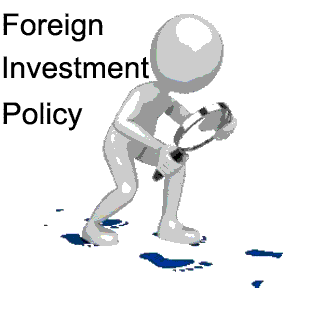
- Economic Expansion Incentives (Relief from Income Tax) Act (Cap 86)
- Income Tax Act (Cap 134).
Broadly speaking, there are two types of tax incentives – incentives to attract specific investments and incentives to promote overseas investment. Most of the tax incentives are administred by the EDB, the MAS or the IES. These incentives extend to a wide range of business sectors.
Some of the financial and tax incentives available are as follows – this is not an exhaustive list; the incentives available may vary from time to time.

- is remitted or transmitted to, or brought into, Singapore
- is applied in or towards the satisfaction of any debt incurred in respect of a trade or business carried on in Singapore
- is applied towards the purchase of any movable property which is brought into Singapore.
- In Singapore, income is assessed to tax on a preceding year basis. Essentially, this means that income earned by a company in a financial year will be taxed in the following tax year, referred to as the year of assessment. For example, income for the financial year ended in 2008 will be assessed in the year of assessment 2009. The Singapore fiscal year is the calendar year. Singapore incorporated companies and Singapore branches of foreign companies are both taxed at the same corporate tax rate, which is currently 17 percent.
The gains are usually deemed to be of an income nature where the seller engages in or is deemed to be engaging in a business of dealing in or trading of shares and securities. The gains are usually considered to be of a capital nature where the seller is a long-term investor. Whether the sale of shares amounts to income gains or capital gains is dependent on the facts of each case. In determining whether the gains constitute taxable income gains, the factors that the tax authority takes into consideration include:
- the length of the holding period of the shares in question
- the frequency of share sale transactions carried out by the seller
- the reasons for which the shares were acquired
- the circumstances under which the disposal of the shares was made
- the nature of business or trade carried on by the seller.
With effect from 1 January 2008, all Singapore companies moved to a one-tier corporate tax system. Pursuant to the one-tier system, the tax paid by a company on its normal chargeable income would constitute a final tax. Also, dividends paid out of “after-tax profit” will be exempt from tax in the hands of shareholders (exempt one-tier dividends). All dividends paid on or after 1 January 2008 are exempt from one-tier dividends.
Under the one-tier system, companies need not maintain a record of corporate tax paid for the purposes of paying dividends. Further, when the company pays an exempt one-tier dividend, it is not required to deduct tax from the dividend paid.
The one-tier system does not alter the tax treatment of foreign dividends remitted to Singapore. Such foreign dividends remain taxable in the hands of the shareholders unless exempted from tax. Expenses incurred by the shareholders to earn the foreign dividends are attributed to and allowed as set-off against such dividends only. The applicable foreign tax credit continues to be granted.
Currently, for Singapore tax-resident corporations, foreign dividends remitted to or received in Singapore will be tax exempt provided the following conditions are met:
- in the year the foreign dividend is received in Singapore, the headline tax rate of the foreign jurisdiction from which the dividend is received is at least 15 per cent
- the foreign dividend has been subjected to tax in the foreign jurisdiction from which they were received. This condition may be regarded as fulfilled if no taxes are paid in the foreign jurisdiction due to a tax holiday, or where specific remission is granted for a “look through” treatment – where an operating subsidiary at the end of a holding chain satisfies this requirement.
- interest, commission, fees in connection with any loan or indebtedness
- royalties and other payments for the use of, or right to use, movable property
- know-how payments for the use of scientific, technical, industrial or commercial knowledge/ information
- technical assistance or service fees
- management fees
- rent or other payments for use of movable property
- directors’ remuneration
- professional service fees
- proceeds from sale of real property by a real property trader.
Goods and services tax
A “taxable supply” is a supply of goods or services made in Singapore other than an exempt supply. A “supply” refers to any form of supply made for a consideration. An “exempt supply” generally relates to financial services, leases and sales of residential properties.
GST is only required to be charged on the supply of goods and services made in Singapore. There are different rules for determining the place of supply of goods and the place of supply of services.
Generally, goods are treated as being supplied at the place from where they are “removed”. If a supply of goods involves “their removal” to Singapore (that is, they are imported), these goods are treated as supplied outside Singapore. If the supply of goods does not involve their removal from or to Singapore, the supply is made in Singapore if the goods are “in” Singapore at the time of the supply. If the goods are not in Singapore at the time of the supply, the supply is not made in Singapore.
In the case of services, a supply of services is deemed made in Singapore if the supplier “belongs” in Singapore. A supplier of services will be treated as belonging in Singapore if they:
- have a business establishment or some other fixed establishment in Singapore and no such establishment elsewhere
- have no such establishment in any country but their usual place of residence is in Singapore
- have such establishments in Singapore and elsewhere and their establishment in Singapore is the one that is most directly concerned with the supply.
If a person’s taxable supply is below the S$1 million threshold, they are not required to be registered as a taxable person. However, if the person transacts frequently with suppliers and customers who are GST-registered, they may consider voluntary registration in order to claim credits or refunds for input tax paid on such goods or services. The Comptroller of GST is not obliged to accept a request for voluntary registration and will only consider such registration if:
- the applicant makes taxable supplies in the course of their business
- the taxable supplies contribute substantially to the livelihood of the applicant
- the denial of registration would cause the applicant to incur substantial input tax which he is unable to recover by virtue of his non-registration.
GST is charged at a prevailing standard rate of 7 per cent. However, there are certain specified goods and services which are termed zero-rated supplies and are subject to GST at 0 per cent. Generally, exported goods and international services rank as zero-rated supplies.
Examples of zero-rated international services include:
- services connected with international transportation
- hiring of transport for use outside Singapore
- services connected with offshore property
- services connected with offshore goods
- services (including prescribed financial services) connected with goods for export
- cultural, artistic and sporting services performed outside Singapore
- services supplied to persons and businesses abroad
- services related to ships and aircraft, other than recreation or pleasure craft
- prescribed international telecommunication services.
The rules prescribing when a supply would be zero-rated are very limited and a misreading or misinterpretation of these rules is not a defense to any claim or charge for breach of the law. It is strongly advised that professional advice be sought in this regard.
A registered taxable person is required to furnish a tax return to the Comptroller not later than one month after the end of each three-month accounting period. An application may be made to the Comptroller for a shorter accounting period of one month, or a longer period of six months provided certain conditions are met. In each case, the tax return for the period must be furnished within one month after the end of the period to which it relates.
A person furnishing his or her GST return must pay the Comptroller the GST due (that is, the difference between the output tax and input tax for the relevant period) for the accounting period to which the return relates. The payment must be made no later than the last day on which he or she is required to forward the GST return to the Comptroller – unless payment is made by way of Giro (automatic bank withdrawal) in which case the payment will be deducted from his or her bank account on the 15th day of the month after the due date for submission of the GST form.
Tax on individuals
Income tax
Singapore income tax on individuals is imposed on a marginal basis. For the year of assessment 2007 onwards, the maximum marginal tax rate is 20 per cent.
Central Provident Fund (CPF) contributions Unlike most countries, there are no compulsory contributions to any pension scheme or social security insurance scheme in Singapore. Singapore instead has the CPF Scheme, which is a form of long-term savings scheme. Compulsory contributions to the CPF account of an employee are required for an employee who is a Singapore citizen or permanent resident.
For such an employee, the employer must deduct and pay to the CPF Board a specified percentage of the employee’s salary (employee’s contribution) for deposit into the employee’s CPF account. The employer must also itself contribute to the employee’s CPF account, which contribution is also a specified percentage of the employee’s salary. Currently, the employee’s rate of contribution is 20 percent and the employer’s rate of contribution is 14.5 percent (15 percent from 1 September 2010) for Singapore citizens and permanent residents (from their third year of obtaining permanent residency status).
Other forms of tax
Stamp duty
Property tax
Customs duty

- advisory services on terms and conditions of employment
- investigation into claims and complaints regarding employment terms
- conciliation of employment/trade disputes
- adjudication of employment disputes.
- the employee’s child is a citizen of Singapore at the time of birth
- the employee was lawfully married to the child’s natural father at the time of conception or before the child’s birth
- the employee has been employed by the employer for at least 90 days before the birth of the child.
- the employee’s child is a Singapore citizen
- the employee is legally married to the other parent, or was married to the other parent at the time of, or at any time after, conception (where the child is not an adopted child); or where the child is an adopted child, the employee was married, widowed, or divorced when the employee adopted the child
- the employee has any child (including any legally adopted or step-child) who is below seven years of age at the time the application for childcare leave is made or any child who celebrated or will be celebrating his or her seventh birthday during the calendar year (i.e., January 1 to December 31) in which the application for childcare leave is made
- the employee has worked for the employer for at least three months.
- planning and preparing employees for re-employment
- the re-employment contract
- recognizing the contributions of re-employed employees
- providing assistance to eligible employees whom employers are unable to re-employ.
- formation and dissolution of trade unions
- safe custody and lawful utilization of union funds
- impartial and proper election of union officers.
- The Workplace Safety and Health Act, which sets out a framework for the promotion of safe practices in all factories and workplaces of various risk levels and industries and
- The Work Injury Compensation Act (which replaced the Workmen’s Compensation Act with effect from 1 April 2008) which covers all employees except self-employed persons, independent contractors, domestic workers, members of the Singapore Armed Forces and officers of the Singapore Police Force, the Singapore Civil Defense Force, the Central Narcotics Bureau and the Singapore Prison Service.
The Work Injury Compensation Act requires employers to maintain insurance for employees who are involved in manual work or non-manual work (where the employee’s total earnings do not exceed S$1,600 per month). It is not mandatory for employers to buy insurance for employees who are involved in non-manual work and have monthly earnings of above S$1,600. Nonetheless, employers will be required to pay compensation in the event of a valid claim, even if they do not buy insurance for this group of employees.
The MOM also requires employers to purchase and maintain insurance for medical expenses of foreign workers. This requirement applies to all foreign workers on work permits (including foreign domestic workers) or S passes. For medical insurance policies taken up or renewed on/or after 1 January 2010, the insurance coverage must be at least S$15,000 per year for each worker’s inpatient care and day surgery during his/her stay in Singapore.

The Subordinate Courts comprise of the District and Magistrate Courts, both of which oversee civil and criminal matters, as well as specialized family, juvenile, coroner’s courts and the Small Claims Tribunal, which handles civil claims for amounts below S$10,000. The Supreme Court is made up of the High Court and the Court of Appeal and hears both civil and criminal matters. The Court of Appeal hears appeals against decisions of the High Court in both civil and criminal matters and has been Singapore’s final court of appeal since 8 April 1994, when appeals to the Judicial Committee of the Privy Council were abolished.
Singapore’s court system is transparent and efficient. In recent years, far-reaching changes have been made within the Supreme Court and the Subordinate Courts to rationalize and standardize court rules into a single uniform set of rules to ensure uniformity of practice and consistency. The courts have also been increasingly vigilant in ensuring that orders of court are complied with and parties do not prolong the process of litigation unnecessarily. These measures have been relatively far-reaching and have resulted in a drastic reduction in case backlog.
As a result of recent amendments to the International Arbitration Act (Cap 143A), the Singapore High Court is now empowered to provide interim relief in aid of arbitrations seated in countries other than Singapore. Before this amendment, the High Court had interpreted the power to provide interim relief conferred by the International Arbitration Act as excluding foreign arbitrations. Parties considering making an application to the Singapore High Court for interim relief will have now greater flexibility to do so.
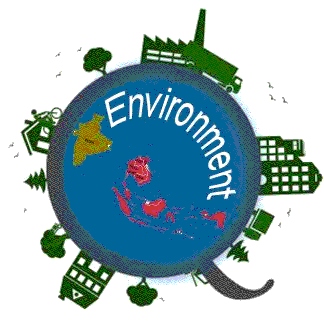
Singapore offers a pro-business environment, advanced infrastructure, world-class connectivity, highly trained people and a young working and consumer population.
Leading surveys have consistently ranked Singapore as one of the most competitive nations and best places for business in the world. In a 2010 World Bank-IFC report, Singapore was ranked as the world’s easiest place to do business and is the second most open economy in the world (according to the 2009 Index of Economic Freedom). Singapore has also consistently been ranked as one of the five least corrupt countries in the world and the least corrupt nation in Asia by Transparency International.
Startups
- the Business Angel Scheme
- the i.MATCH Programme
- the Startup Enterprise Development Scheme.

International recognition
Cooperative approach with industry
Copyright
- If the work is only published after the death of the author, it lasts for 70 years from the end of the year in which the work was first published – 70 years from the end of the year the author died.
- Published editions of literary, dramatic, musical or artistic works (layout) – 25 years from the end of the year the edition was first published.
- Sound recordings and films – 70 years from the end of the year the sound recording or film was first published
- Broadcasts and cable programs – 50 years from the end of the year the broadcast was first made or cable programme was first included in a cable programme service
- Performances – 70 years from the end of the year of the performance
- Copyright material sent over the Internet or stored in webservers is treated in the same manner as copyright material in other media. The civil remedies for copyright infringement include injunctions, damages and account of profits. In addition, there is criminal liability attached to distribution of infringing materials, as well as willful infringement of copyright.
- a more streamlined test of registrability which is that of capacity to distinguish
- simplifying and expediting the examination process
- the protection of “shape” and “color” marks
- the protection of “well-known marks”.
In 2009, the Singapore Court of Appeal, Singapore’s highest court, released its first decision concerning “well-known marks” in the case of Novelty Pte Ltd v Amanresorts Ltd & Anor (Civil Appeal No. 56 of 2007/Z) [2009] SGCA 13. In this landmark case, the Singapore Court of Appeal discussed the definition of a “well-known mark” under Singapore’s laws and the application of section 55 of the Trade Marks Act, which grants protection to “well-known marks” which have not been registered in Singapore.
Patents
Geographical indications
Franchising in Singapore
Competition laws
- anti-competitive agreements, decisions and practices
- abuses of market power
- mergers and acquisitions that have the effect of substantially lessening competition. A voluntary merger notification system applies under the Competition Act.


Visitors are generally granted either a 14-day or 30-day social visit pass on arrival, provided they hold passports with a validity of at least six months, sufficient funds to cover their stay in Singapore, confirmed onward/return tickets and entry documentation for any onward destination. A social visit pass permits short stays, enabling attendance at job interviews, short business negotiations, discussions or meetings. For longer stays, see below.
Any person wishing to be employed or to work under a contract of service or employment (or any similar agreement) for a prolonged period in Singapore must obtain an employment pass.
Business visitor
The Singapore government strongly supports new investors/entrepreneurs in establishing business activities in the country. Through the Singapore Economic Development Board (EDB), the Global Investor Programme (GIP) for foreign investors has been developed under which foreigners are allowed to enter and stay in Singapore through the following means:
- multiple journey visa (MJV)
- long-term visit pass for entrepreneurs (lTVP)
- EntrePass.
- are ready to start a new business/company in Singapore and who will be actively involved in the operation of the business/company
- own a business which must have been registered with the Accounting and Corporate Regulatory Authority (ACRA) for a maximum of six months at the time of submission of the EntrePass application.
All new EntrePass applicants must register their companies as private limited companies with at least S$50,000 paid-up share capital and hold at least a 30 per cent shareholding in the company. The Ministry of Manpower (MOM) and the Standards, Productivity and Innovation Board are responsible for processing applications for EntrePasses.
- P1 pass: for foreigners earning a fixed monthly salary of more than S$7,000
- P2 pass: for foreigners earning a fixed monthly salary of more than S$3,500 and up to S$7,000 and who possess recognized qualifications
- Q1 pass: for foreigners earning a fixed monthly salary of more than S$2,500 and who possess recognized qualifications.
The personalized employment pass (PEP) is available for employment pass holders who have worked in Singapore for some time or overseas foreign professionals whose last drawn fixed monthly salary overseas was at least S$7,000. The PEP allows the holder to remain in Singapore for up to six months between jobs to evaluate new employment opportunities and its validity is not conditional upon the PEP holder keeping his job with the same employer, unlike an employment pass.

- representative offices
- branches of parent companies
- Singapore subsidiaries
- partnerships
- joint ventures
- trusts.
The government authority responsible for registering representative offices for most industries (including manufacturing, business services and commerce) is International Enterprise Singapore (the IES).
Representative offices of banking, finance and insurance businesses have to be registered with the Monetary Authority of Singapore (MAS).
A representative office would not normally be regarded as a taxable entity in Singapore as it does not generate income. However, unless protected under a tax treaty, in some circumstances, the Inland Revenue Authority of Singapore (IRAS) may take the view that there is some profit element which should be subject to tax (for example, where the representative office regularly secures orders for acceptance by the overseas head office of the foreign corporation). In such circumstances, the IRAS may impose taxes based on a notional profit of 5 per cent of the operating overheads and expenses incurred by the representative office in Singapore. In this case, tax would be levied at the normal corporate rate on the notional profit amount. This is because the IRAS may regard the activities rendered by the representative office to the head office of the foreign corporation as sufficient to amount to a taxable presence in Singapore.
Branch office
A branch must have a registered office address in Singapore and two local agents for acceptance of service of process and notices. Note that the liabilities of the branch are the liabilities of the foreign company which established it.
A branch will not be subject to limitations on the scope of its activities. However, just as with any other business or company operating in Singapore, certain types of business activities will require governmental approvals and licenses. The registered foreign company will then be able to carry on business in Singapore through its branch.
From a taxation point of view, a branch is considered a non-resident entity (because control and management are exercised outside Singapore) and, therefore, is not eligible for tax exemptions and incentives available to local companies in Singapore. The IRAS will impose income tax on the income of the branch accrued in or derived from Singapore. The current applicable corporate tax rate (for the 2010 year of assessment onwards) is 17 per cent on all chargeable income accrued in or derived from Singapore.
Singapore subsidiary
A company must be incorporated with a minimum of one member and have at least one director who is ordinarily resident in Singapore. A Singapore citizen, permanent resident or an employment pass holder will typically satisfy this requirement. Subject to compliance with these residency requirements, the sole shareholder and director can be the same person. Every Singapore-incorporated company must maintain a registered office in Singapore and have at least one company secretary who is ordinarily resident in Singapore.
A subsidiary may be either a private or a public company. Professional assistance should be sought to ensure that the most suitable corporate structure is chosen. The majority of companies in Singapore are private companies. Private companies are limited to a maximum of 50 non-employee shareholders. Although it is possible to incorporate a company with unlimited liability, there may be few commercial or other benefits in doing so. In a limited liability company, the liability of the members to contribute to the debts of the company is limited to the amount they each agreed to contribute as capital. Private companies are also subject to fund-raising restrictions and must not offer their shares to the public or engage in any activity that would require the lodgment of a disclosure document (for example, a prospectus). A private limited company’s name in Singapore normally ends with “Private Limited” or “Pte Ltd”.
Public companies are usually listed on a stock exchange and have well-established medium-to-large businesses with a large number of shareholders. Public companies are subject to more stringent rules and regulations as they have the ability to raise funds from the public. A public company’s name in Singapore ends with “Limited” or “Ltd”.
A corporate tax rate of 17 per cent for the 2010 year of assessment applies to Singapore incorporated and registered companies.
Partnership
Each partner is personally liable (on a joint and several basis) with the other partners for the debts and obligations of the partnership incurred while the relevant person is a partner. Each partner can be held responsible for the actions of another partner. Subject to an exception for certain types of professional partnerships, partnerships may not generally have more than 20 members.
Limited liability partnerships
An LLP partner can be an individual or a business entity and retains the desired flexibility of a partnership to the extent that it has less onerous reporting requirements than companies. Further, an LLP partner’s liability is limited (that is, a partner is not liable for liabilities of the other partner(s)).
An LLP must have at least two partners at all times and one manager who is ordinarily resident in Singapore. The manager may be held personally liable for the failure of the LLP to submit an annual declaration of solvency statement.
For income tax purposes, an LLP is tax-transparent (that is, each LLP partner will bear the liability of paying taxes according to its own tax circumstances, which would include its share of profits from the LLP). For treaty purposes, the Singapore tax authorities may not issue a tax residency certificate for the LLP as it is a tax-transparent entity, but may consider issuing the certificate to the LLP’s partners who are individuals or companies resident in Singapore for tax purposes.
A limited partner’s liability is capped at his agreed investment in the limited partnership provided that the limited partner does not participate in management of the limited partnership. If the limited partner does participate in management of the limited partnership, he risks losing his limited liability status for the period of such participation in management. The LP Act helpfully sets out a non-exhaustive list of “safe harbor” activities which do not constitute participating in management of a limited partnership.
Singapore Exchange
Potential investors should ask their legal advisers for a thorough outline of the current listing rules.

- representative offices
- branches of parent companies
- Singapore subsidiaries
- partnerships
- joint ventures
- trusts.
The government authority responsible for registering representative offices for most industries (including manufacturing, business services and commerce) is International Enterprise Singapore (the IES).
A representative office must be staffed by a representative from the foreign corporation’s head office and it can engage Singaporean support staff. Liabilities of a representative office are borne by the foreign corporation.
A representative office would not normally be regarded as a taxable entity in Singapore as it does not generate income. However, unless protected under a tax treaty, in some circumstances, the Inland Revenue Authority of Singapore (IRAS) may take the view that there is some profit element which should be subject to tax (for example, where the representative office regularly secures orders for acceptance by the overseas head office of the foreign corporation). In such circumstances, the IRAS may impose taxes based on a notional profit of 5 per cent of the operating overheads and expenses incurred by the representative office in Singapore. In this case, tax would be levied at the normal corporate rate on the notional profit amount. This is because the IRAS may regard the activities rendered by the representative office to the head office of the foreign corporation as sufficient to amount to a taxable presence in Singapore.
Branch office
A branch must have a registered office address in Singapore and two local agents for acceptance of service of process and notices. Note that the liabilities of the branch are the liabilities of the foreign company which established it.
A branch will not be subject to limitations on the scope of its activities. However, just as with any other business or company operating in Singapore, certain types of business activities will require governmental approvals and licenses. The registered foreign company will then be able to carry on business in Singapore through its branch.
From a taxation point of view, a branch is considered a non-resident entity (because control and management are exercised outside Singapore) and, therefore, is not eligible for tax exemptions and incentives available to local companies in Singapore. The IRAS will impose income tax on the income of the branch accrued in or derived from Singapore. The current applicable corporate tax rate (for the 2010 year of assessment onwards) is 17 per cent on all chargeable income accrued in or derived from Singapore.
A company must be incorporated with a minimum of one member and have at least one director who is ordinarily resident in Singapore. A Singapore citizen, permanent resident or an employment pass holder will typically satisfy this requirement. Subject to compliance with these residency requirements, the sole shareholder and director can be the same person. Every Singapore-incorporated company must maintain a registered office in Singapore and have at least one company secretary who is ordinarily resident in Singapore.

- Economic Expansion Incentives (Relief from Income Tax) Act (Cap 86)
- Income Tax Act (Cap 134).
Broadly speaking, there are two types of tax incentives – incentives to attract specific investments and incentives to promote overseas investment. Most of the tax incentives are administred by the EDB, the MAS or the IES. These incentives extend to a wide range of business sectors.
Some of the financial and tax incentives available are as follows – this is not an exhaustive list; the incentives available may vary from time to time.

- is remitted or transmitted to, or brought into, Singapore
- is applied in or towards the satisfaction of any debt incurred in respect of a trade or business carried on in Singapore
- is applied towards the purchase of any movable property which is brought into Singapore.
- In Singapore, income is assessed to tax on a preceding year basis. Essentially, this means that income earned by a company in a financial year will be taxed in the following tax year, referred to as the year of assessment. For example, income for the financial year ended in 2008 will be assessed in the year of assessment 2009. The Singapore fiscal year is the calendar year. Singapore incorporated companies and Singapore branches of foreign companies are both taxed at the same corporate tax rate, which is currently 17 percent.
The gains are usually deemed to be of an income nature where the seller engages in or is deemed to be engaging in a business of dealing in or trading of shares and securities. The gains are usually considered to be of a capital nature where the seller is a long-term investor. Whether the sale of shares amounts to income gains or capital gains is dependent on the facts of each case. In determining whether the gains constitute taxable income gains, the factors that the tax authority takes into consideration include:
- the length of the holding period of the shares in question
- the frequency of share sale transactions carried out by the seller
- the reasons for which the shares were acquired
- the circumstances under which the disposal of the shares was made
- the nature of business or trade carried on by the seller.
With effect from 1 January 2008, all Singapore companies moved to a one-tier corporate tax system. Pursuant to the one-tier system, the tax paid by a company on its normal chargeable income would constitute a final tax. Also, dividends paid out of “after-tax profit” will be exempt from tax in the hands of shareholders (exempt one-tier dividends). All dividends paid on or after 1 January 2008 are exempt from one-tier dividends.
Under the one-tier system, companies need not maintain a record of corporate tax paid for the purposes of paying dividends. Further, when the company pays an exempt one-tier dividend, it is not required to deduct tax from the dividend paid.
The one-tier system does not alter the tax treatment of foreign dividends remitted to Singapore. Such foreign dividends remain taxable in the hands of the shareholders unless exempted from tax. Expenses incurred by the shareholders to earn the foreign dividends are attributed to and allowed as set-off against such dividends only. The applicable foreign tax credit continues to be granted.
Currently, for Singapore tax-resident corporations, foreign dividends remitted to or received in Singapore will be tax exempt provided the following conditions are met:
- in the year the foreign dividend is received in Singapore, the headline tax rate of the foreign jurisdiction from which the dividend is received is at least 15 per cent
- the foreign dividend has been subjected to tax in the foreign jurisdiction from which they were received. This condition may be regarded as fulfilled if no taxes are paid in the foreign jurisdiction due to a tax holiday, or where specific remission is granted for a “look through” treatment – where an operating subsidiary at the end of a holding chain satisfies this requirement.
- interest, commission, fees in connection with any loan or indebtedness
- royalties and other payments for the use of, or right to use, movable property
- know-how payments for the use of scientific, technical, industrial or commercial knowledge/ information
- technical assistance or service fees
- management fees
- rent or other payments for use of movable property
- directors’ remuneration
- professional service fees
- proceeds from sale of real property by a real property trader.
Goods and services tax
A “taxable supply” is a supply of goods or services made in Singapore other than an exempt supply. A “supply” refers to any form of supply made for a consideration. An “exempt supply” generally relates to financial services, leases and sales of residential properties.
GST is only required to be charged on the supply of goods and services made in Singapore. There are different rules for determining the place of supply of goods and the place of supply of services.
Generally, goods are treated as being supplied at the place from where they are “removed”. If a supply of goods involves “their removal” to Singapore (that is, they are imported), these goods are treated as supplied outside Singapore. If the supply of goods does not involve their removal from or to Singapore, the supply is made in Singapore if the goods are “in” Singapore at the time of the supply. If the goods are not in Singapore at the time of the supply, the supply is not made in Singapore.
In the case of services, a supply of services is deemed made in Singapore if the supplier “belongs” in Singapore. A supplier of services will be treated as belonging in Singapore if they:
- have a business establishment or some other fixed establishment in Singapore and no such establishment elsewhere
- have no such establishment in any country but their usual place of residence is in Singapore
- have such establishments in Singapore and elsewhere and their establishment in Singapore is the one that is most directly concerned with the supply.
If a person’s taxable supply is below the S$1 million threshold, they are not required to be registered as a taxable person. However, if the person transacts frequently with suppliers and customers who are GST-registered, they may consider voluntary registration in order to claim credits or refunds for input tax paid on such goods or services. The Comptroller of GST is not obliged to accept a request for voluntary registration and will only consider such registration if:
- the applicant makes taxable supplies in the course of their business
- the taxable supplies contribute substantially to the livelihood of the applicant
- the denial of registration would cause the applicant to incur substantial input tax which he is unable to recover by virtue of his non-registration.
GST is charged at a prevailing standard rate of 7 per cent. However, there are certain specified goods and services which are termed zero-rated supplies and are subject to GST at 0 per cent. Generally, exported goods and international services rank as zero-rated supplies.
Examples of zero-rated international services include:
- services connected with international transportation
- hiring of transport for use outside Singapore
- services connected with offshore property
- services connected with offshore goods
- services (including prescribed financial services) connected with goods for export
- cultural, artistic and sporting services performed outside Singapore
- services supplied to persons and businesses abroad
- services related to ships and aircraft, other than recreation or pleasure craft
- prescribed international telecommunication services.
The rules prescribing when a supply would be zero-rated are very limited and a misreading or misinterpretation of these rules is not a defense to any claim or charge for breach of the law. It is strongly advised that professional advice be sought in this regard.
A registered taxable person is required to furnish a tax return to the Comptroller not later than one month after the end of each three-month accounting period. An application may be made to the Comptroller for a shorter accounting period of one month, or a longer period of six months provided certain conditions are met. In each case, the tax return for the period must be furnished within one month after the end of the period to which it relates.
A person furnishing his or her GST return must pay the Comptroller the GST due (that is, the difference between the output tax and input tax for the relevant period) for the accounting period to which the return relates. The payment must be made no later than the last day on which he or she is required to forward the GST return to the Comptroller – unless payment is made by way of Giro (automatic bank withdrawal) in which case the payment will be deducted from his or her bank account on the 15th day of the month after the due date for submission of the GST form.
Tax on individuals
Income tax
Singapore income tax on individuals is imposed on a marginal basis. For the year of assessment 2007 onwards, the maximum marginal tax rate is 20 per cent.
Central Provident Fund (CPF) contributions Unlike most countries, there are no compulsory contributions to any pension scheme or social security insurance scheme in Singapore. Singapore instead has the CPF Scheme, which is a form of long-term savings scheme. Compulsory contributions to the CPF account of an employee are required for an employee who is a Singapore citizen or permanent resident.
For such an employee, the employer must deduct and pay to the CPF Board a specified percentage of the employee’s salary (employee’s contribution) for deposit into the employee’s CPF account. The employer must also itself contribute to the employee’s CPF account, which contribution is also a specified percentage of the employee’s salary. Currently, the employee’s rate of contribution is 20 percent and the employer’s rate of contribution is 14.5 percent (15 percent from 1 September 2010) for Singapore citizens and permanent residents (from their third year of obtaining permanent residency status).
Other forms of tax
Stamp duty
Property tax
Customs duty

- advisory services on terms and conditions of employment
- investigation into claims and complaints regarding employment terms
- conciliation of employment/trade disputes
- adjudication of employment disputes.
- the employee’s child is a citizen of Singapore at the time of birth
- the employee was lawfully married to the child’s natural father at the time of conception or before the child’s birth
- the employee has been employed by the employer for at least 90 days before the birth of the child.
- the employee’s child is a Singapore citizen
- the employee is legally married to the other parent, or was married to the other parent at the time of, or at any time after, conception (where the child is not an adopted child); or where the child is an adopted child, the employee was married, widowed, or divorced when the employee adopted the child
- the employee has any child (including any legally adopted or step-child) who is below seven years of age at the time the application for childcare leave is made or any child who celebrated or will be celebrating his or her seventh birthday during the calendar year (i.e., January 1 to December 31) in which the application for childcare leave is made
- the employee has worked for the employer for at least three months.
- planning and preparing employees for re-employment
- the re-employment contract
- recognizing the contributions of re-employed employees
- providing assistance to eligible employees whom employers are unable to re-employ.
- formation and dissolution of trade unions
- safe custody and lawful utilization of union funds
- impartial and proper election of union officers.
- The Workplace Safety and Health Act, which sets out a framework for the promotion of safe practices in all factories and workplaces of various risk levels and industries and
- The Work Injury Compensation Act (which replaced the Workmen’s Compensation Act with effect from 1 April 2008) which covers all employees except self-employed persons, independent contractors, domestic workers, members of the Singapore Armed Forces and officers of the Singapore Police Force, the Singapore Civil Defense Force, the Central Narcotics Bureau and the Singapore Prison Service.
The Work Injury Compensation Act requires employers to maintain insurance for employees who are involved in manual work or non-manual work (where the employee’s total earnings do not exceed S$1,600 per month). It is not mandatory for employers to buy insurance for employees who are involved in non-manual work and have monthly earnings of above S$1,600. Nonetheless, employers will be required to pay compensation in the event of a valid claim, even if they do not buy insurance for this group of employees.
The MOM also requires employers to purchase and maintain insurance for medical expenses of foreign workers. This requirement applies to all foreign workers on work permits (including foreign domestic workers) or S passes. For medical insurance policies taken up or renewed on/or after 1 January 2010, the insurance coverage must be at least S$15,000 per year for each worker’s inpatient care and day surgery during his/her stay in Singapore.

The Subordinate Courts comprise of the District and Magistrate Courts, both of which oversee civil and criminal matters, as well as specialized family, juvenile, coroner’s courts and the Small Claims Tribunal, which handles civil claims for amounts below S$10,000. The Supreme Court is made up of the High Court and the Court of Appeal and hears both civil and criminal matters. The Court of Appeal hears appeals against decisions of the High Court in both civil and criminal matters and has been Singapore’s final court of appeal since 8 April 1994, when appeals to the Judicial Committee of the Privy Council were abolished.
Singapore’s court system is transparent and efficient. In recent years, far-reaching changes have been made within the Supreme Court and the Subordinate Courts to rationalize and standardize court rules into a single uniform set of rules to ensure uniformity of practice and consistency. The courts have also been increasingly vigilant in ensuring that orders of court are complied with and parties do not prolong the process of litigation unnecessarily. These measures have been relatively far-reaching and have resulted in a drastic reduction in case backlog.
As a result of recent amendments to the International Arbitration Act (Cap 143A), the Singapore High Court is now empowered to provide interim relief in aid of arbitrations seated in countries other than Singapore. Before this amendment, the High Court had interpreted the power to provide interim relief conferred by the International Arbitration Act as excluding foreign arbitrations. Parties considering making an application to the Singapore High Court for interim relief will have now greater flexibility to do so.

Singapore offers a pro-business environment, advanced infrastructure, world-class connectivity, highly trained people and a young working and consumer population.
Leading surveys have consistently ranked Singapore as one of the most competitive nations and best places for business in the world. In a 2010 World Bank-IFC report, Singapore was ranked as the world’s easiest place to do business and is the second most open economy in the world (according to the 2009 Index of Economic Freedom). Singapore has also consistently been ranked as one of the five least corrupt countries in the world and the least corrupt nation in Asia by Transparency International.
Startups
- the Business Angel Scheme
- the i.MATCH Programme
- the Startup Enterprise Development Scheme.

International recognition
Cooperative approach with industry
Copyright
- If the work is only published after the death of the author, it lasts for 70 years from the end of the year in which the work was first published – 70 years from the end of the year the author died.
- Published editions of literary, dramatic, musical or artistic works (layout) – 25 years from the end of the year the edition was first published.
- Sound recordings and films – 70 years from the end of the year the sound recording or film was first published
- Broadcasts and cable programs – 50 years from the end of the year the broadcast was first made or cable programme was first included in a cable programme service
- Performances – 70 years from the end of the year of the performance
- Copyright material sent over the Internet or stored in webservers is treated in the same manner as copyright material in other media. The civil remedies for copyright infringement include injunctions, damages and account of profits. In addition, there is criminal liability attached to distribution of infringing materials, as well as willful infringement of copyright.
- a more streamlined test of registrability which is that of capacity to distinguish
- simplifying and expediting the examination process
- the protection of “shape” and “color” marks
- the protection of “well-known marks”.
In 2009, the Singapore Court of Appeal, Singapore’s highest court, released its first decision concerning “well-known marks” in the case of Novelty Pte Ltd v Amanresorts Ltd & Anor (Civil Appeal No. 56 of 2007/Z) [2009] SGCA 13. In this landmark case, the Singapore Court of Appeal discussed the definition of a “well-known mark” under Singapore’s laws and the application of section 55 of the Trade Marks Act, which grants protection to “well-known marks” which have not been registered in Singapore.
Patents
Geographical indications
Franchising in Singapore
Competition laws
- anti-competitive agreements, decisions and practices
- abuses of market power
- mergers and acquisitions that have the effect of substantially lessening competition. A voluntary merger notification system applies under the Competition Act.

CONTACT WITH US
Give us your information



